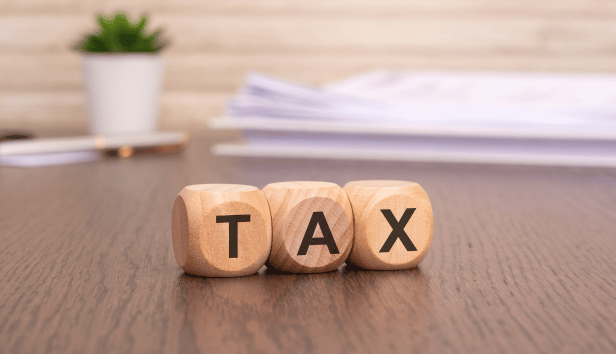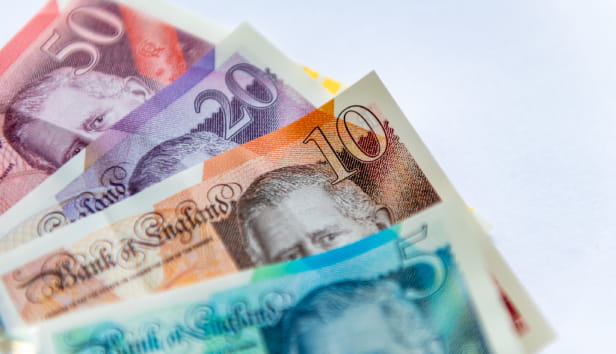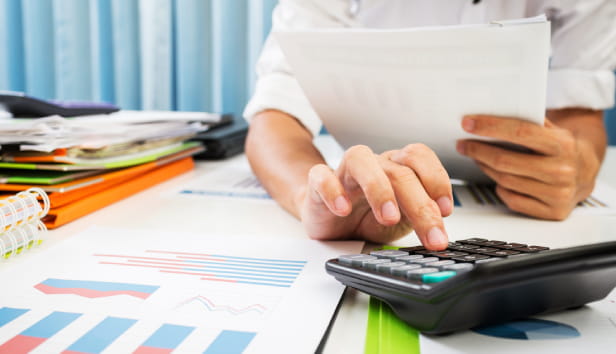/mature-couple-looking-at-taxes.jpg?la=en&h=650&w=1400&hash=5CFABEEDC751F26D56DD3E85749E3C36)
This article is for general guidance only and is not financial or professional advice. Any links are for your own information, and do not constitute any form of recommendation by Saga. You should not solely rely on this information to make any decisions, and consider seeking independent professional advice. All figures and information in this article are correct at the time of publishing, but laws, entitlements, tax treatments and allowances may change in the future.
Rising numbers of pensioners are finding that they need to pay income tax – including some of those who rely solely on the State Pension.
Analysis by pension consultancy LCP found an increase of more than two-thirds in the number of over-65s paying income tax since 2010. Whilst most of those will have other income, even those who only get the State Pension are more likely to pay income tax in years to come. The reason is two-fold.
Firstly, the personal allowance – the amount everyone can receive in income before they pay income tax on it – has been frozen at £12,570 a year since 2021.
Secondly, the triple lock – which guarantees the State Pension will increase every year by the greater of 2.5%, earnings growth or inflation – has pushed the State Pension to a current level of £11,502 a year, not far off the tax-free personal allowance.
Some people who get a larger state pension (if they reached pension age before 6 April 2016 and have some Additional State Pension) might already be paying income tax on their State Pension.
The triple lock means the State Pension will increase again in April 2025, by 4.1%, in line with earnings growth, and it will go up by at least 2.5% in 2026 and 2027.
With income tax thresholds frozen until April 2028, the standard rate of the new State Pension will therefore be just above the tax threshold by 2027/28, meaning income tax would need to be paid by more than three quarters of a million extra retired people, according to estimates by LCP.
This would remain the case even if income tax thresholds rose in line with inflation – as is the Government’s intention from April 2028 – because the State Pension will rise at least in line with inflation, and potentially higher than inflation.
Calculations by wealth firm AJ Bell suggest the new State Pension could be almost £13,250 by 2030.
/health-compare-page-1440x640-(1)/shutterstock_1448603999-(1).jpg?sc=max&mw=800&h=450&la=en&h=731&w=1300&hash=87B041E0CF8AB714E424C59EFF2928C2)
Steve Webb, partner at pension consultants LCP said: “In a few years’ time even those whose sole income is the standard rate of the new State Pension will find that they start to have to pay income tax.
“In most cases, the amounts involved will be relatively small, but the hassle of having to check the figures and deal with HMRC is something which will be unwelcome to most people of modest means in retirement.”
| 2024/25 (£ per week) | 2025/26 (£ per week) | Change (£ per week) | 2024/25 (£ per year) | 2025/26 (£ per year) | Change (£ per year) | |
|---|---|---|---|---|---|---|
|
Old basic pension
|
£169.50
|
£176.45
|
+£6.95
|
£8,814
|
£9,175 |
+£361 |
|
New state pension
|
£221.20
|
£230.30
|
+£9.10
|
£11,502
|
£11,975
|
+£473
|
If the State Pension is your only income, then even though you may have a tax bill, you shouldn’t have to fill in a tax return. Instead you will need to go through a process known as ‘simple assessment’, where HMRC uses the info it has – about your State Pension and any other income – to work out what you should have paid, and then writes to you with a tax demand after the end of each tax year.
But most retired people have a combination of the State Pension and one or more other pensions, such as a workplace pension. In this case, tax is calculated on your total income from all sources, depending on which tax bracket you end up in.
Currently, in England, Wales and Northern Ireland the first £12,570 is tax-free. Basic rate tax at 20% is paid on income between £12,571 and £50,270. Between £50,271 and £125,140 tax is payable at 40%. Income over £125,140 is taxed at 45%. Scotland has its own income tax bands.
Any income you take from your private pension is taxed in the same way as earned income. Tax will be deducted from your pension income by your pension provider before it’s paid to you, using Pay as You Earn (PAYE). If you have a private pension and the State Pension, your pension provider will also take off any tax you owe on your State Pension.
If you get payments from more than one pension provider (for example, from a workplace pension and a personal pension), HMRC will ask one of your providers to take the tax owed on your State Pension.
If you're still employed while getting the State Pension, then tax is calculated on your total income from all sources, and will then be deducted by your employer.
If you're self-employed, or if you have more than £10,000 a year in income from savings and investments, you will have to fill in a tax return.
Read our tips on filling in your tax return.
There are ways to legitimately make sure you’re not paying more tax than necessary on your pension income. From age 55 onwards (rising to 57 in 2028), you can take up to 25% of a private pension as ‘tax-free cash’, up to £268,275.
Jason Hollands, managing director of wealth firm Evelyn Partners, says: “This can be taken as a lump sum – but it can also be taken in stages, reducing the amount of tax that will be due on a retirement income.”
Tax-free pension cash could be also used to reinvest in ISAs. Unlike pensions, any income they generate – from share dividends or interest from cash or bonds – is not subject to tax.
Hollands says: “Switching your ISA investments into ones that generate income could be a good move to top up pension income, perhaps enabling your taxable income to stay just below the threshold for the higher rate of tax.”
Married couples and civil partners should also consider switching any savings or investments that they have outside of ISAs and pensions into the name of their spouse, if their spouse pays a lower rate of tax. This is known as an ‘interspousal transfer’.
“Unlike transferring investment to someone you are not married to, this does not trigger a tax event, such as a capital gain,” Hollands points out.
Interspousal transfers can enable a married couple to maximise two ISA allowances, two annual dividend allowances of £500 per person and the annual Personal Savings allowance, where basic rate taxpayers can receive up to £1,000 of interest each year tax-free but only £500 for higher rate taxpayers.
Another tax trick is the ‘marriage allowance’. Many pensioners currently use this to reduce their tax bill – where if one partner earns below the personal allowance and other pays income tax, the lower-income partner signs over 10% of their personal allowance to their tax-paying spouse.
This is fine as long as her taxable income is under 90% of the tax threshold. But with the rising State Pension and frozen income tax thresholds, some people may now find that they start to pay tax purely because they have signed over 10% of their allowance.
Webb says: “This may still make overall sense for them as a couple (as the other partner is using all of the 10% transferred over), but it may well irritate the partner who has signed over their ‘spare’ tax allowance only to find it is not entirely ‘spare’ after all.”



.jpg?la=en&h=650&w=1440&hash=D2D232A61FCEAEBDC0D69D8AE38E8E41)

Discover our easy ways to take control of your finances, from doing your tax return to assessing your savings.



.jpg?la=en&h=354&w=616&hash=1254A3F816E81965A47EA68E3AEC9F7A)

